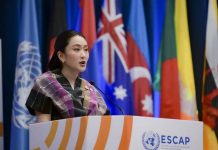With the world shifting into the digital age, ASEAN also aims to improve the region and its people through digital broadcast. All member countries have agreed to completely shift their broadcasting systems from analog to digital by the year 2020.
The advancement of technology has led to a better quality communication system and today many people are not satisfied with low quality visual and audio signals from the analog broadcasting system on television. Digital television does not only answer to the need for high quality visual and audio reception; the technology comes with multi-language system, interactive and electronic program guide where audience can read the details of the program and its timing. Television sets equipped with high definition features are on a rising demand.
Television broadcasting must therefore be adjusted from an analog system to a digital one to suit people’s needs. ASEAN ministers responsible for information and communication agreed that ASEAN should adopt a phased approach toward analog switch off over a period of time from 2015 to 2020.
The digital system allows easier production of television programs, and therefore gives more choices of television contents to the audience.
The Cabinet in May 2012 acknowledged the National Broadcasting and Telecommunications Commission (NBTC)’s decision to adopt digital video broadcasting as the standard for Thailand. The move was regarded as a significant step for Thailand to work out a roadmap for the implementation of digital broadcasting.
The NBTC’s decision was in line with the joint media statement, issued at the 11th Conference of the ASEAN Ministers Responsible for Information, held in Kuala Lumpur, Malaysia, in March 2012.
The ASEAN Ministers noted the progress in the implementation of digital broadcasting in ASEAN Member States toward analogue switch-off from 2015 to 2020. The Ministers also endorsed the “Guidelines for ASEAN Digital Switch-Over,” which will serve as a shared blueprint to aid all Member States in their transition toward digital broadcasting. These guidelines are based on the best practices of various ASEAN Member States and referencing the “Guidelines for the transition from analogue to digital broadcasting” developed by the International Telecommunication Union (ITU).
The ITU has advised all countries to switch from analog to digital by 2015. The process may take years for a nation to completely shift to digital. So far many countries in Europe, the US, and Japan have already completely switched off their analog systems. And Thailand is on its path to do so.




